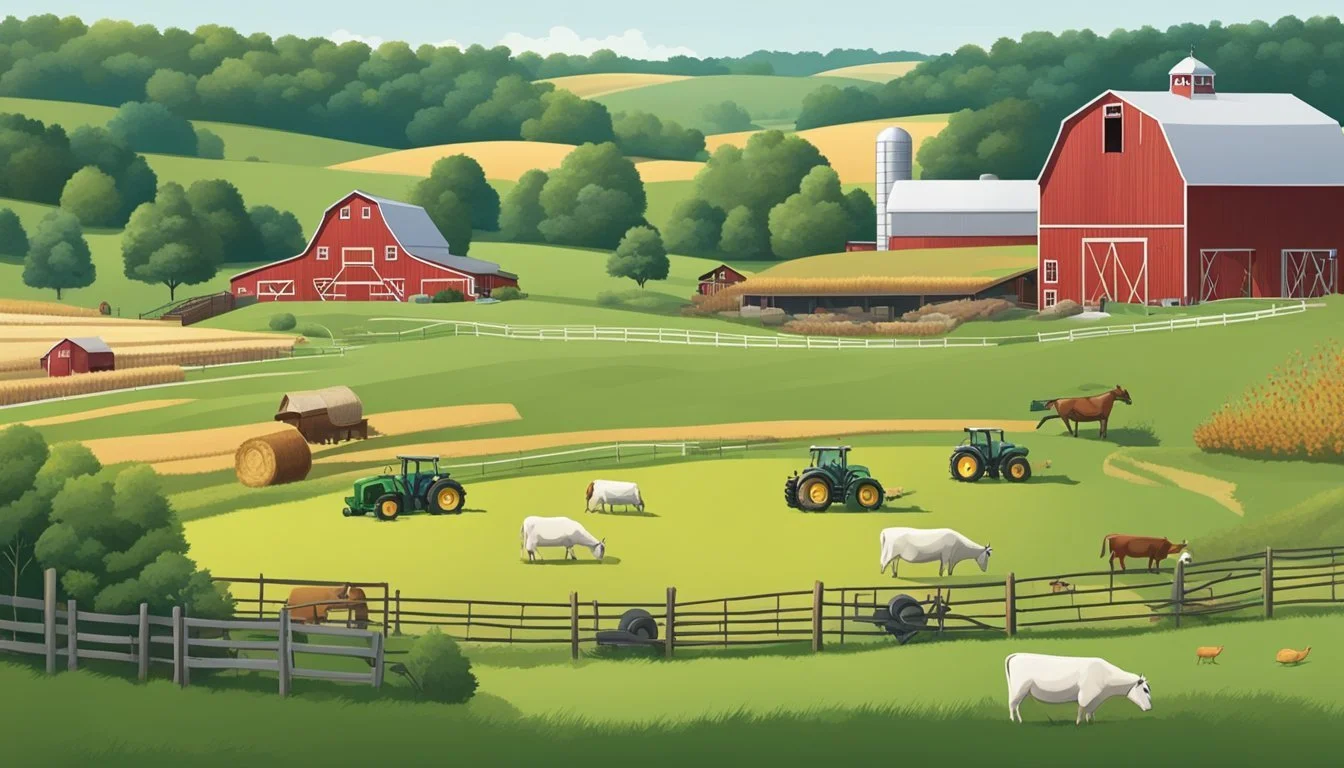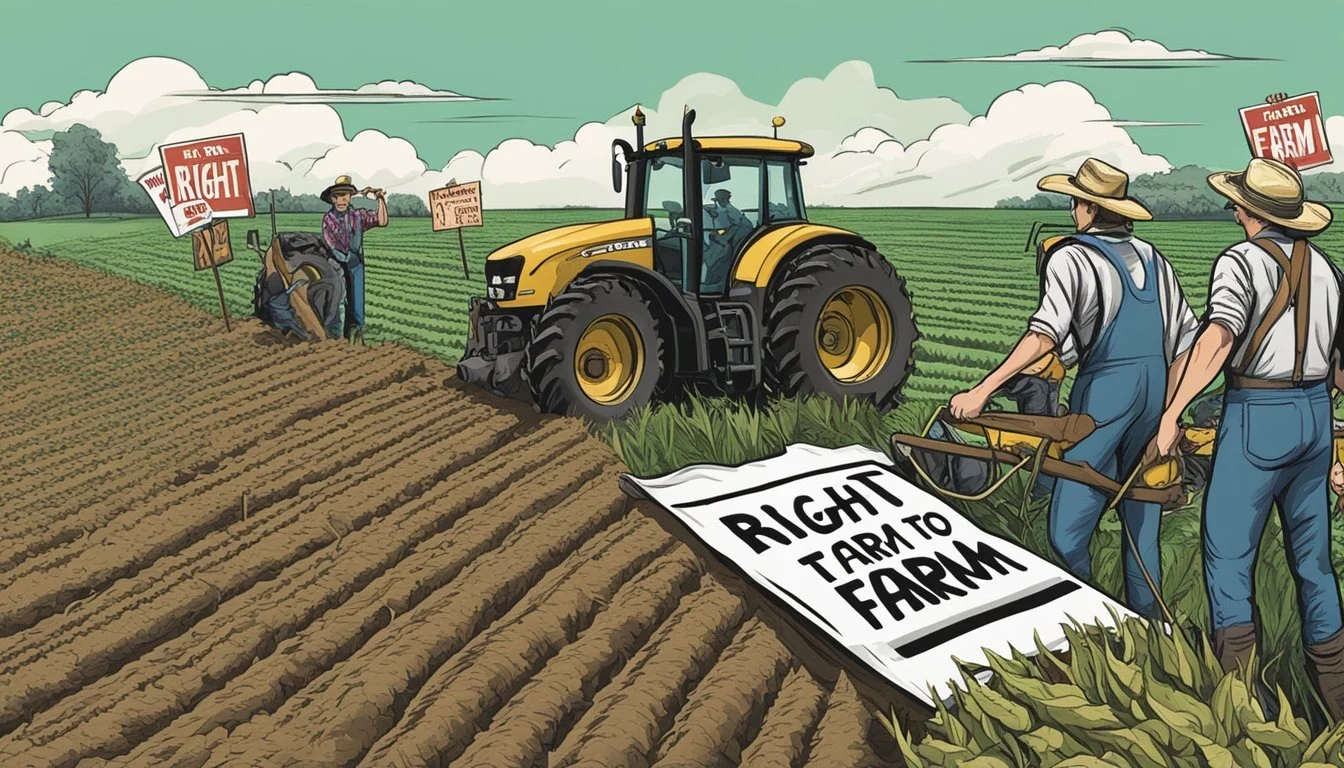Right to Farm Law in Ohio
Understanding Its Impact and Provisions
The Right to Farm Law in Ohio is a legislative measure designed to protect the interests of farmers and maintain agricultural lands. Passed in 1982, the law serves as a defense mechanism for farming operations, particularly when they face nuisance complaints from neighbors or other community members. It helps in safeguarding farmers from unfair or disruptive legal challenges that might arise due to the routine operations of their farms.
This law is significant in a state where agriculture plays a vital role in the economy and land use. Ohio recognizes the importance of its farmlands and the challenges that farmers can face in the course of doing business. The Right to Farm Law aims to strike a balance between agricultural practices and the rights of neighbors, ensuring that farming activities can continue while attention is also given to concerns about nuisance and environmental impact.
As urban sprawl continues, the interactions between agricultural and non-agricultural land uses can lead to conflicts, making the Right to Farm Law a crucial aspect of legal framework supporting Ohio’s agricultural sector. It underlines the state's commitment to its farmers by protecting agricultural land use and providing farmers with a degree of legal certainty for their work.
Overview of Ohio's Right to Farm Law
Ohio's Right to Farm Law serves as a crucial framework within the state's agricultural legal system, aiming to safeguard farmers and maintain the vitality of the agriculture sector. Formally known as the Farmland Preservation Act, and found in Chapter 929 of the Ohio Revised Code, the law came into effect in 1982.
The essence of this law provides farmers with a nuisance defense, protecting agricultural operations from certain lawsuits brought by others who move into a rural area and then object to inconveniences stemming from ordinary farming activities. Ohio’s Right to Farm Law emphasizes a balance between agricultural practices and neighboring land uses.
The framework stipulates certain conditions under which this nuisance defense can be applied. Farmers must ensure that their operations comply with state regulations and established practices aimed at minimizing potential nuisance impacts. Provided they adhere to these stipulations, farmers receive protections from nuisance claims.
Here is a brief outline of the law's applications:
Nuisance Defense: Farmers gain an affirmative defense against nuisance claims, particularly from new non-farming neighbors.
Regulatory Compliance: Protection is extended only if farming practices align with state regulations and aim to reduce nuisance impacts.
Agriculture Preservation: The law assists in preserving Ohio's farming culture and land against urban development pressures.
Overall, Ohio’s Right to Farm Law represents a key legislative measure aimed at defending the state's agricultural heritage, ensuring that farming activities can continue to flourish, and mitigating conflicts between farmers and their neighbors.
Establishment of Agricultural Districts
Agricultural districts in Ohio are crucial for providing farmers and landowners with specific benefits aimed at preserving farmlands. This section outlines the formal procedures and key features of the Agricultural District Program, its benefits for landowners, enrollment qualifications, and policies concerning renewal and expiration.
Agricultural District Program
The Agricultural District Program in Ohio is designed to support and protect agricultural activities by preserving agricultural land. Farmers and agricultural landowners enter this program through an application process administered by the county auditor. Once accepted, their land is officially recognized as an agricultural district, which affords certain protections under state law, especially in relation to urban encroachment and non-agricultural development.
Benefits for Landowners
Landowners with property in an agricultural district can enjoy numerous benefits. These include:
Protection against nuisance lawsuits that might arise from normal farming operations.
Deferred assessments on taxes when land is utilized for building sewer and water lines.
A formal review process if the land is subjected to eminent domain for public use.
Potential eligibility for the Current Agricultural Use Valuation Program (CAUV), which allows for lower property tax rates based on agricultural value rather than market value.
Enrollment and Qualifications
To enroll land into an agricultural district, landowners must meet the following qualifications:
Ownership of land engaged in farming or agriculture.
Participation in the Current Agricultural Use Valification Program (CAUV) is often necessary.
Submission of an application to the county auditor for certification.
Requirement Details Land Usage Must be engaged in agricultural activities. Size No specific size requirement unless specified by the county auditor. Prior Use Land should have been used for agriculture for at least three years prior.
Renewal and Expiration
Landowners must renew their agricultural district certification every five years through the county auditor's office. If a landowner does not renew their application, the district certification will expire, and the land will lose its protected status and associated benefits. It is essential for landowners to track the duration of their enrollment to avoid unintended expiration.
Common Agricultural Practices and Farmer Protections
The right to farm in Ohio intertwines the use of generally accepted agricultural practices with robust legal protections to support farming activities and landowner rights, while also considering expansion or operational changes.
Generally Accepted Agricultural Practices
In Ohio, agricultural activities are expected to align with generally accepted agricultural practices. These include the cultivation of crops, livestock rearing, and the use of chemicals like pesticides and manure for efficient farm management. Locally established customs also play a pivotal role in defining these practices, ensuring that farming methods adhere to regional standards and contribute to sustainable agriculture.
Legal Protections for Farming Activities
State law in Ohio provides legal immunity to farmers through affirmative defenses, protecting them from nuisance lawsuits, provided their operations comply with applicable federal, state, and local laws. These protections under the Ohio Revised Code are contingent on the farmers conducting their agricultural activities according to accepted practices while responsibly managing potential nuisances such as odor from manure or noise from machinery.
Impact of Changes in Corporate Structure
Alterations in a farm's corporate structure, whether through contraction, expansion, or ownership changes, must maintain compliance with established agricultural laws. These changes should not infringe upon the legal rights of farmers to conduct their business, nor should they invite additional nuisance complaints as long as traditional and recognized agricultural practices are followed.
Nuisance Lawsuit Prevention
The Right to Farm Law acts as a defense for Ohio farmers against nuisance lawsuits. It stipulates that routine agricultural activities like changing crop rotations, adjusting the species of livestock, and the storage and application of manure do not typically constitute a nuisance if they're in accordance with standard agricultural procedures. This legal standpoint provides a form of lawsuit prevention, fostering a more stable environment for commercial agricultural production.
Ohio Administrative and Regulatory Framework
The Ohio Right to Farm laws constitute a significant part of the state's efforts to support and preserve the agricultural industry. Spanning a range of areas, these laws interact with federal, state, and local legislation to guide farming practices, land use, and help protect farmer's property interests.
Federal, State, and Local Law Interactions
In Ohio, the Right to Farm law operates under Chapter 929 of the Ohio Revised Code which is informed by both federal and local laws. This ensures consistency with broader agricultural policies and respects local custom. The law is designed to integrate with federal regulations, upholding generally accepted agricultural practices as standards for agricultural districts.
House Bill 166 and Agricultural Impact
HB 166, a recent budget bill, brought changes to the Right to Farm Law. This legislation revised existing regulations, reinforcing the notion of immunity for agricultural landowners from nuisance lawsuits. It adds clarity to the property interest of agricultural land within the spectrum of state and local laws — clearly impacting policies related to farm operations and tax incentives.
Current Agricultural Use Valuation Law
The Current Agricultural Use Valuation (CAUV) law offers tax benefits to eligible agricultural landowners. Under the CAUV, taxes are assessed based on agricultural value rather than potential developed value, easing the financial burden on farmers who are practicing generally accepted farming operations according to local custom and regulations.
Agricultural District Regulations
In Ohio, agricultural districts are governed by regulations that uphold a landowner's right to engage in farming. These districts safeguard against legal challenges that could arise from local laws or changes in local conditions. Participants in the Agricultural District Program gain additional protections and can assert a nuisance defense in accordance with the state's Right to Farm statues.
Challenges and Conflicts in Agricultural Law
Agricultural law in Ohio embraces diverse issues ranging from disputes between landowners to the impact of farming practices on resources. The Right to Farm Law offers various defenses against nuisance lawsuits, yet it interacts complexly with environmental, lease, and property concerns.
Dispute Resolution and Legal Actions
Disputes within agricultural law often escalate to legal actions such as nuisance lawsuits. In Ohio, the Right to Farm Law provides a defense for farmers against nuisance lawsuits if they employ standard farming practices and have been in operation prior to the dispute. However, this does not immunize them from all litigation, especially if the practices prove harmful to the community or adjacent landowners. An attorney skilled in navigating the nuances of agricultural law becomes essential in such instances, where resolution often requires intricate knowledge of both legal precedents, like Spur Industries v. Del E. Webb, and state-specific statutes.
Land Use and Environmental Concerns
Farmers and lawmakers must balance efficient land use with the preservation of water and the environment. Changes to land use, such as shifts in crop rotation or the introduction of different livestock species, can lead to community conflicts, especially when they potentially threaten local resources. Moreover, the application of commercial fertilizer and manure, while necessary for modern farming, must be managed carefully to avoid environmental degradation. Ohio's laws aim to protect farming practices while also ensuring responsible stewardship of the environment.
Farmland Lease and Property Transitions
Farm leasing and the transition of property ownership present challenges as landowner interests may not always align with sustainable agricultural practices. Farmland leases often require specific clauses that address practices in line with conservation efforts and land retirement programs. When farms change hands, there can be conflicts over existing leases or misunderstandings about the obligations created by government conservation incentives. Adequate legal frameworks are needed to safeguard the interests of all parties involved during these transitions, ensuring that both landowners and lessees maintain their rights and responsibilities.
Advancements and Innovations in Agriculture
With advancements in technology and practices, agriculture in Ohio has experienced significant innovations, particularly in sustainable methods and energy efficiency, exploration of new agricultural business models, community engagement, and government-backed incentives.
Sustainable Practices and Energy Production
Farming operations are increasingly adopting sustainable practices such as crop rotation and precision agriculture. These methods not only preserve the integrity of farmland but also contribute to overall ecosystem health. Biomass and bioenergy production are on the rise, with farmers utilizing crop residues and animal manure to produce methane for electric or heat energy, aligning with local custom and supporting environmental sustainability.
Transitioning to New Agricultural Ventures
Farmers are exploring alternative crops and innovative farming techniques. Diversification through crop rotation and the raising of livestock improves soil health and reduces dependency on a single income stream. This adaptability allows farmers to respond to market changes and embrace opportunities within Ohio’s agricultural landscape.
Community and Economic Development
Agricultural innovations play a pivotal role in supporting the community and fostering economic development. Initiatives such as local farmers' markets build a sense of community and encourage the direct sale of fresh, locally-sourced produce, benefiting both farmers and consumers.
Government Programs and Incentives
Government conservation and land retirement programs incentivize farmers to adopt environmentally friendly practices. The use of proper storage methods for commercial fertilizer, manure, and pesticides is promoted to safeguard water quality. Moreover, Ohio offers assistance during the fall harvest season, reinforcing the commitment to support agriculture through various seasons and challenges.








